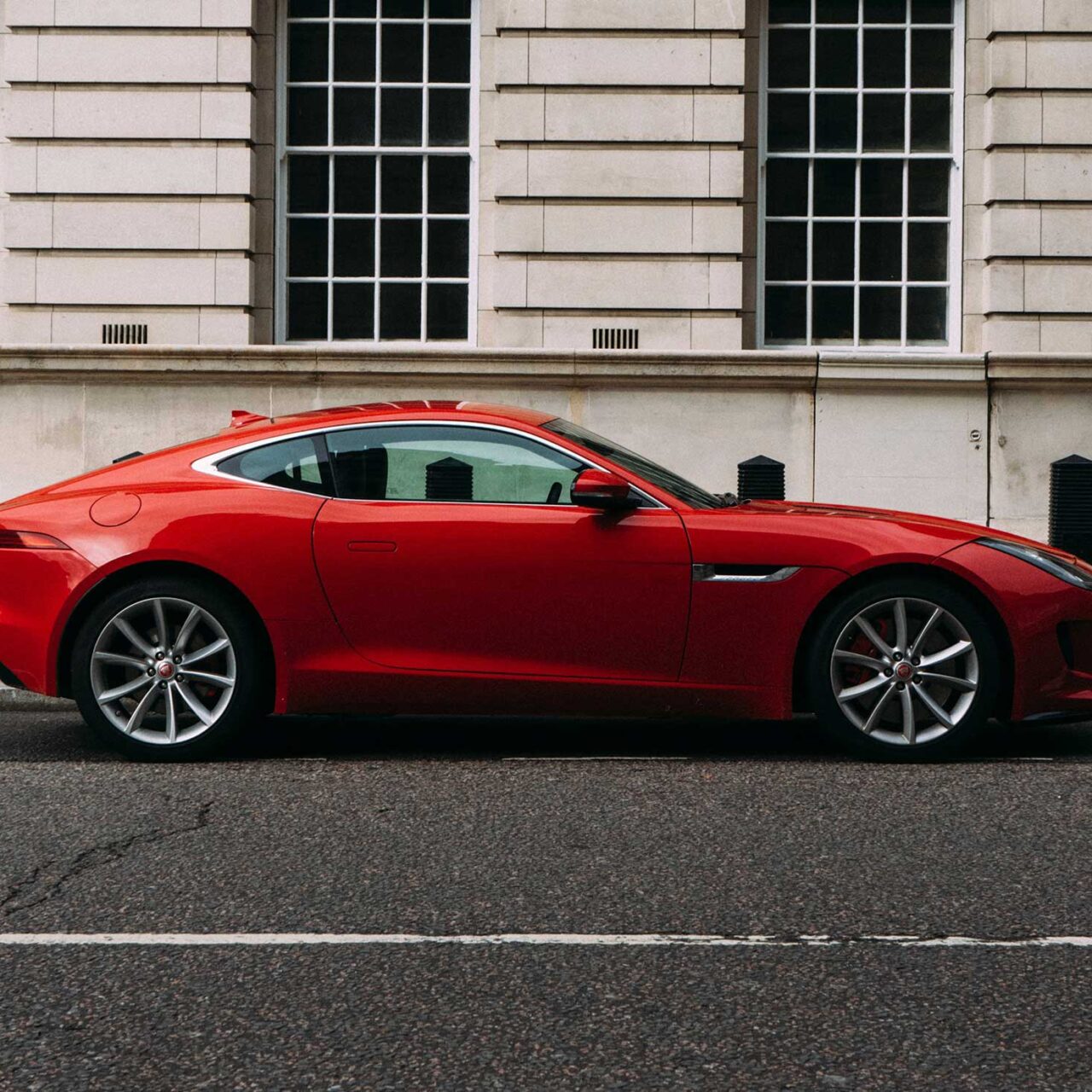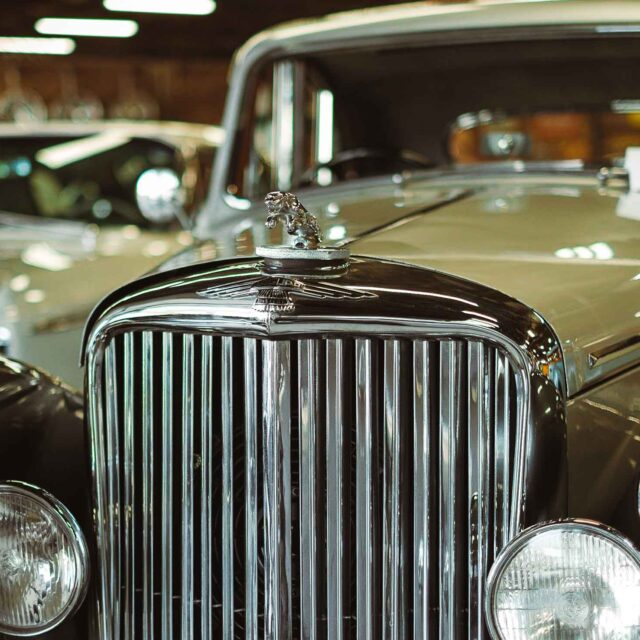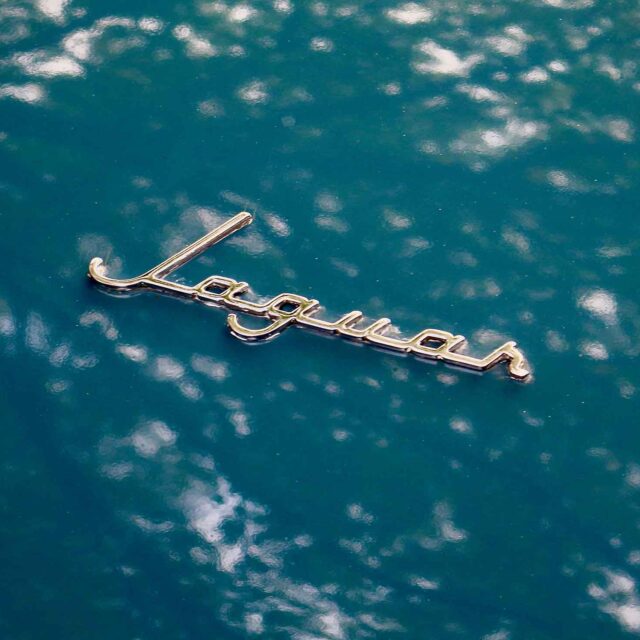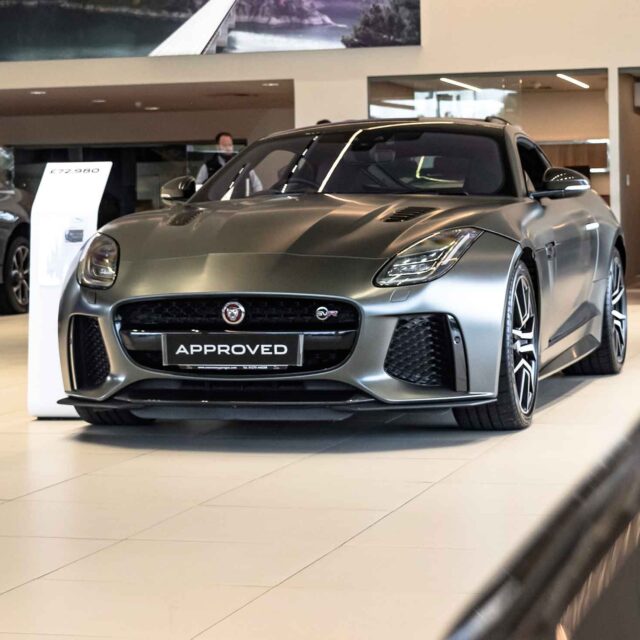William Lyons turned a tiny sidecar manufacturing firm into a major global company. He was interested in mechanical goods, especially bicycles, but his major passion was motorcycles and their engines.
William Walmsley, 10 years older than Lyons and also a motorcyclist, made sidecars at the workshop. William Lyons senior and Thomas Walmsley guaranteed a £1,000 loan at Williams Deacon’s Bank in Blackpool in August 1922. They located adequate premises and signed a partnership agreement on 21 November 1922. Swallow is not referenced on any surviving records from this time, yet they traded as the Swallow Sidecar Company from the outset.
Swallow was given space in the coachbuilders’ area of the London Motor Show. The new carnation red and black SS I cost £310 fully. SS II coupé, Wolseley-Swallow Hornet sports, and Austin-Swallow Seven shared a stand.
With a range of saloons and coupés, Lyons created an open-top model. SS I Tourer debuted at the 1933 London Motor Show. In March of the following year, Foleshill began producing an SS II Tourer. This design, based on the saloon/coupé, had an open body like the bigger Tourer. The racing flair was reinforced by dual cowls on the scuttle, replicating the SS I Tourer and similar to Rileys and MGs of the day. A smooth continuous line went from the scuttle’s dual cowls to the cut-away doors and passenger tub.
The SS II Tourer was a complete four-seater like the SS II Saloon and Coupé but had a narrower baggage boot that quickly filled with the hood cover and side screens, leaving little room for more than a small valise. Lyons aimed for a cohesive line with both Tourer models’ boots, which controlled their size. When the hood is down, the Tourers feature a flowing line from the bonnet to the rear bumper, matched by the line from the front of the wings to the rear trailing edge.
The Tourer bodies show Lyons getting into his stride for the SS Jaguar and SS 100, which would lead, despite World War II, to the XK120 and Mark VII. Both the SS I and SS II Tourers and Coupés had outstanding style and sporting appeal, but the saloons sold more and made SS Cars a solid profit.
S.S. Cars Limited was founded on October 26, 1933, with a capital of £10,000 in £1 shares and took over automobile manufacture; Swallow continued with sidecars. From then on, SS Cars was the major business, and the line was expanded with a Saloon with additional windows instead of false hood-irons.
Holland restyled a Bentley radiator to fit the four-door SS saloon, and Foleshill built a prototype. Lyons employed his own way of construction: full-size panels placed on a wood frame and created by sight. 21 September 1935 was the car’s trade show debut at London’s Mayfair Hotel.
The SS Jaguar had a 2.5-liter engine and was offered with a 1.5-liter saloon and a two-seater SS Jaguar 100 sports with the same engine. The SS Jaguar was well-received, and when Lyons asked dealers to anticipate its price, they suggested £600. Lyons surprised them by saying the automobile will sell for £385 in the new year.
William Lyons had recognised the gap in the market for a competitively priced sports saloon and in his typical fashion had filled that gap with a good-looking car at an attractive price. In 1935, few people possessed cars, therefore £385 for the SS Jaguar was practically a year’s pay.
New models brought the SS moniker to prominence, and the range was enlarged before World War II. Lyons sought a “good-looking” engine for a new big sedan. Long hours of discussion produced the six-cylinder XK engine.
After the war, the saloon line was redesigned and put into production, the SS 100 was terminated, and SS Cars became Jaguar Cars Limited. The projected huge saloon took time to construct, so Lyons built a stop-gap car, the Jaguar Mark V, using a Standard-based engine.
To show off the new XK engine, he developed and built the XK 120 alongside William Heynes and Fred Gardner. This limited-production model debuted at the 1948 Earls Court Motor Show. First-run Jaguar XK120s were aluminium-bodied because to a steel scarcity. William Lyons fought for a greater steel allocation but had to convince the Ministry of Supply that Jaguar would increase exports. The Americans ordered several XK120s. The steel issue slowed manufacturing, and Jaguar risked losing orders if it could not deliver.
Lyons focused on his saloon after putting the Jaguar XK120 into limited production. Lyons developed new models by having panels produced to his specifications and fitting them to a mocked-up template. As usual, he watched how light fell on the car’s curves and adjusted the shape using string, wood, and metal rods. Mark V headlights were more integrated, but still proud. The new saloon’s headlights were moulded into the body and flanked by a redesigned grille. The original radiator grille was made smoother for the 1950s. XK 120 sales tour William Lyons caught up on American clients’ emotions and integrated their opinions into his new design.
The XK120 captivated popular interest and left the competition behind. In August 1949, the British Racing Drivers’ Club held a Production Sports car Race at Silverstone, Northamptonshire, sponsored by the Daily Express. Peter Walker, Leslie Johnson, and Prince Bira will drive for Jaguar, managed by F R W ‘Lofty’ England. Lyons tested a vehicle on the track. He maintained his touch and quickness. Johnson and Walker won. The new vehicle and engine won first race.
By 1950, the new saloon was being tested, Lyons had started making the XK120, and steel was becoming more widely accessible. Lyons attended the Geneva Motor Show in March and the New York Imported Car Show in April. Lyons was disappointed by Mark V sales in the US but pleased by XK120 interest. This model was needed to satisfy demand. Soon after returning from America, Lyons was elected President of the SMTT, which thrilled him. Becoming President of the SMTT affirmed his status in the auto industry and Jaguar’s importance.
Meanwhile, works-prepared XK120s competed in tough events. Leslie Johnson finished sixth in the Mille Miglia in April, but other vehicles did not. Mechanical difficulties plagued them, which was not surprising given Jaguar’s lack of expertise in contests using normal production vehicles. Ian Appleyard and Patricia Lyons won the 1950 International Alpine Rally in their white Jaguar XK120 (NUB120). Stirling Moss won at Dundrod that year, earning Lyons’ esteem. He made Moss a works driver on the spot, launching his career.
Jaguar exported more than 80% of its production, although steel allotment was low. Lyons pressed for higher allowances, and the Ministry of Supply eventually agreed. In October, Jaguar Mark VII debuted at Earls Court. The silver-blue Jaguar exhibited against a crimson backdrop caught the crowd’s attention. £998 helped the picture. Lyons has done it again: a luxurious automobile with wood, leather, and deep-pile carpets. UK and worldwide dealers placed orders for next year’s delivery. After Earls Court, the automobile was transferred to the Waldorf Astoria Hotel. Again, it caused a stir and attracted additional orders. Lyons incorporated a few features from the Mark V, but the Mark VII’s styling is very distinct.
Her Majesty Queen Elizabeth, the Queen Mother, bought one and afterwards bought more Jaguar and Daimler automobiles. The Mark VII and XK120 put the company in the post-war spotlight.
The XK120 demonstrated it could handle the 24-hour Le Mans race in 1950, although not winning. Lyons approved a 1951 racing model late in the year. Bob Knight constructed a tubular chassis for Heynes’ 3.4-liter XK engine. The gorgeous XK120 body had to be reworked for Le Mans. Malcolm Sayer, a 1950 Jaguar employee, was given this duty. Sayer was an engineer and aerodynamicist at Bristol Aeroplane.
The Jaguar XK120C (C for Competition) became the C-Type. Lyons joined Jaguar race-manager F R W ‘Lofty’ England’s squad at Le Mans. Lyons’ 24-hour wait was not easy. Two vehicles failed to finish, and he expected the worst, but the third, piloted by Peter Walker and Peter Whitehead, won. Jaguar’s success reinforced Lyons’ conviction in the power of publicity. It trumped any ad. The race win raised demand; thus, manufacturing was expanded.
The fixed-head XK120 was released. It was a good-looking automobile, evoking the pre-war SS 100 Coupé, and sales rose.
The C-Type was redesigned for the 1953 Le Mans. Stirling Moss and Peter Walker finished second. Jaguar set the first 100 mph (160 km/h) racing average. The newspapers blared Jaguar in giant headlines, BBC radio broadcast the drama, and cinema newsreel cameras carried the event to Britain. Before TV, these were the only ways to reach a wide audience.
Lyons helped develop disc brakes for production automobiles with Dunlop. They were employed on the C-Type and found useful for road automobiles. The XK120 was created in 1954 and launched as the XK140 at Earls Court.
The Jaguar 2.4-liter was debuted in October 1955. This was Jaguar’s first unitary model, like the XK140 and Mark VII. It cost £1,269, less than the Daimler Conquest (£1,511) but more than the Riley Pathfinder and Wolseley 6/90 (£1,205). These automobiles and the Rover 75 were priced similarly. Lyons had previously offered small-engine copies of bigger cars; this automobile featured its own XK engine. Design influences from the XK120/140 and Mark VII showed familial similarity, but it was unlike any prior Jaguar, thus the extended gestation.
William Lyons was knighted in 1956 for his efforts in the British auto industry. Mark VIII was improved that year. It was a Mark VII with upgraded interior and exterior styling. HM visited Jaguar, another honour. In March, the queen and prince visited Browns Lane. They toured and talked with factory managers and workers. The 2.4-liter saloon was mass-produced.
The 3.4-liter version of the XK150 was launched despite a manufacturing fire. Lyons modified the saloon’s aesthetics by adding a larger grille that matched the XK150. After repeated success at Le Mans, Lyons dissolved its works team but prepared vehicles for other teams, like as Ecurie Ecosse. Jaguar’s new saloon helped boost exports and financial health. No time for standing still; development was needed. Although the 2.4/3.4 saloon was successful, Lyons was already improving it before the first vehicles arrived.
1957’s Mark VIII and 1958’s 3.8-liter Mark IX were new models. First Jaguar with standard disc brakes and power steering. The 3.8-liter XK engine featured a new cylinder block and was not a bored-out 3.4-liter. Behind the scenes, a little sports vehicle and a huge saloon were being worked on.
The Ministry of Supply approved Lyons’ £1.25 million offer for the Browns Lane site in 1959. The Jaguar Mark II 2.4, 3.4, and 3.8-liter saloons were debuted that year. The inside was brightened by replacing the top door pressing with chromed window frames and enlarging the front and back windows. The older car’s narrow rear track was widened from 50 to 53.4 inches (135 cms). This enhanced the car’s handling, while the revised rear made the saloon seem better. A little update made the car’s front more 1960-like, attracting the people.
Over 100,000 Mark IIs were made. It resonated with automobile buyers. The Jaguar Mark II was popular with many types of individuals, including the police, who employed it for urban and highway patrol. Flying Squad, Special Branch, and VIP protection also employed it.
Jaguar released the E-Type Roadster and Fixed Head Coupé in 1961. The Roadster was designed by Malcolm Sayer, while the Coupé was created by Bob Blake with help from Lyons. Lyons expected the E-Type would be a niche product, thus its popularity surprised him. Lyons believed the Mark II and Mark X would be volume Jaguars. This Lyons-badged car was the first big saloon without a separate chassis. Lyons drew inspiration from the Mark II and previous saloons. The Mark X’s 3.8-liter XK engine has a ‘straight port’ cylinder head. The ports are somewhat crooked, which improves cylinder filling and reduces turbulence. It weighed two tonnes yet could reach 120 mph (192 km/h). Mark X’s independent rear suspension from the E-Type provided a smooth, comfortable ride. At £2,392, it was a luxury deal for a huge automobile.
Sir William Lyons bought Guy Motors in 1961. With Daimler, Jaguar had additional plant space and a presence in the heavy vehicle market. Sir William, 60, commanded Jaguar with the enthusiasm of a guy half his age. He had several ideas for Jaguar, Daimler, and Guy.
In 1969 the XJ6 Jaguar won car of the year and the V12-powered XJ6 and E-Type models were debuted.
In retirement, Lyons worked on an estate car and the XJ6 he had started at Browns Lane. Lyons believed the XJ6 saloon would make a good estate car because of its small trunk. Lyons would not sacrifice form. After much study, he determined that an estate version of the XJ6 would dilute the lines and shelved the concept.
1976 stroke weakened him for a spell. Slowly, his health improved, but he was weaker.
Lyons’ last views on the following XJ6 production model became the XJ40, a long and difficult programme.
Sir William Lyons died in 1985. The next year, Paris launched the XJ40. A fitting tribute to the man who made Jaguar a global powerhouse.






